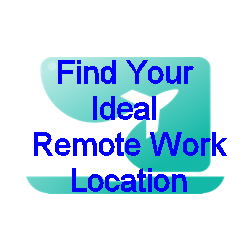No this isn’t the law firm How created after Dewey and Cheatham died. It’s about work and how there are trade-offs. If you are still struggling with remote or hybrid work, use this as a thought exercise to see what’s important to your organization. Here are the rules: You can structure your work priorities based on only 2 of the 4 dimensions of What, Where, When, and How. Let’s look at the different combinations.
Where and When
Welcome to the traditional 9 to 5. People have a specific place to work and a prescribed time to come and go. What and how may be considerations, but performance is largely based on butts in seats and other simple productivity measures. If you are in the office on time and at your desk, you must be doing what you are supposed to do. Sound familiar? Most of the time, managers don’t know how much time someone spends at their desk correlates to how much work they are doing. They just assume that more time is better.
There is generally a lack of metrics that indicate progress or the impact that people are making. Managers are busy tracking time cards, scheduling meetings, and minimizing water cooler conversions.
What and Where
Here the office is still core to the work, but you can kind of come and go as needed. Departments are well-defined and optimized. Communication is likely to be challenging because work is still only set up to be done in a central place. Processes are largely implied by the fact that work will be done in the office. A little thing like a Covid case in the building can quickly bring work to a standstill.
What and When
The office is giving way to flexibility. We probably aren’t global at this point because we want everyone working on more or less the same time. But we are embracing distributed work. As long as we stay focused, and stay on the same schedule, we don’t need to worry about being in an office. The fact that we might not have very well-defined processes gets ignored because management can still tell when everyone is working. They are probably using keystroke monitoring tools just to make sure.
Where and How
This is another office-centric approach that is very factory-like. Processes are well-defined, but they generally don’t work outside the office walls. Time is flexible, but it’s probably shift-based. Processes are designed for efficiency but not necessarily communication. You have options for when you come into the office, but you still have to come into the office.
There’s not a lot of resiliency in this model. One good hurricane, fire, or pandemic, and you could be in trouble. Companies with this model may have more than one location so if there is a failure, work can simply be moved to a similarly setup location. Think McDonald’s.
What and How
Welcome to the distributed, remote-first company. Work is well-defined, asynchronous, and can be done from anywhere. An office is primarily for collaboration and you won’t see rows of desks with varying levels of personalization. If there is an office, you are going there for specific projects, meetings, or to use specific equipment. Staff can work anywhere at any time.
There is a tradeoff though. Take any processes or manuals from your office operations and throw them in the trash. There might be some usable parts but you aren’t just adapting what you are doing from how you did things in the office. This is fundamentally different. You also need to operate as if staff are working from Mars. It’s still probably a few years off despite Elon Musk’s best efforts, but it’s good practice.
What Works for You?
There are appropriate reasons for all of these models. Some are going to become more common than others. And realistically, no company focuses just on two aspects of work. But if you force yourself to take a look at your priorities, you may see there are other ways of doing the work of your organization.



